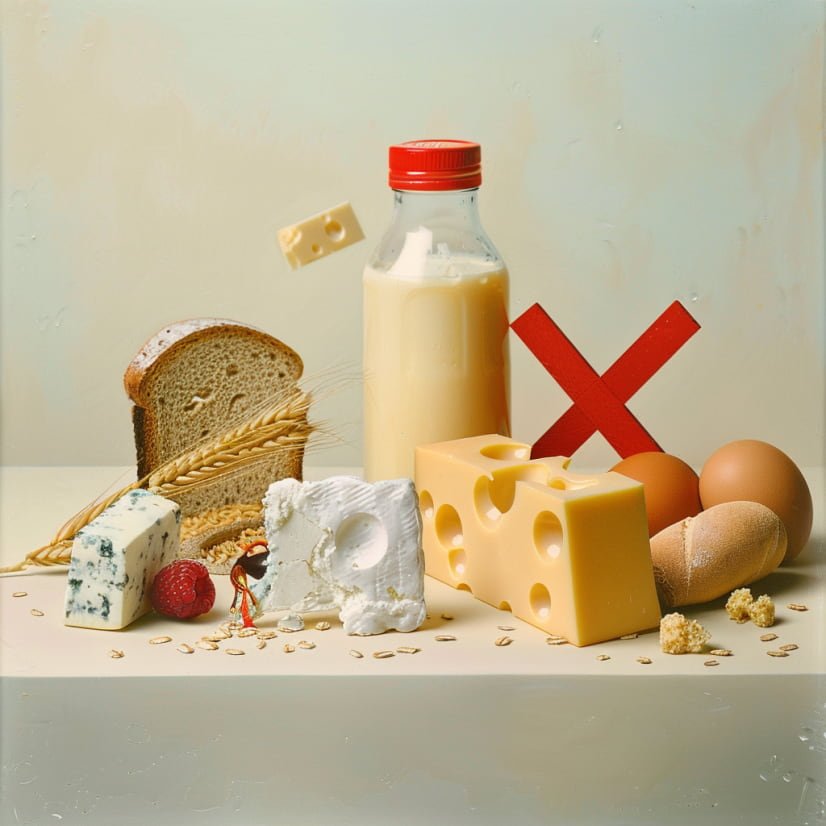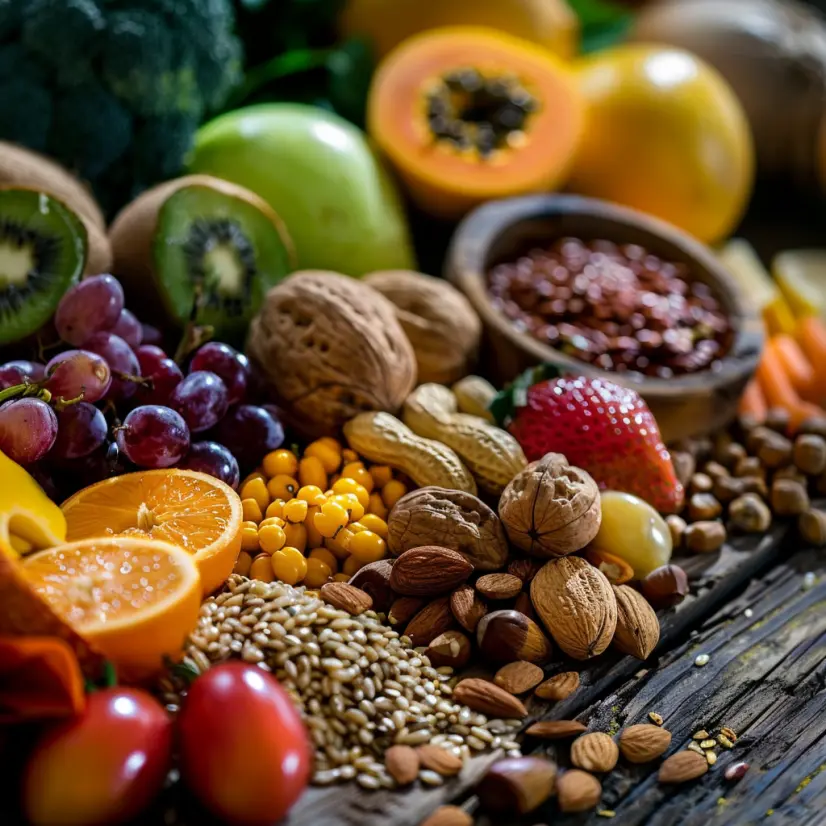Should you be interested in learning more about the advantages and difficulties associated with adhering to a grain and dairy-free diet, an examination of the enhancements in health and wellness resulting from the removal of grains and dairy from your dietary intake will be conducted.
Table of Contents
Furthermore, guidance on transitioning to this novel eating regimen, proposing nutritious alternatives and recipes, as well as offering recommendations for effective meal preparation and shopping, will be presented.
Additionally, an investigation into a potential crossword clue linked to this particular dietary restriction will be undertaken. With that said, let us delve into the topic at hand.
What is a Grain and Dairy-Free Diet?
A diet devoid of grains and dairy, commonly known as a grain-free and dairy-free diet, entails the exclusion of all grain and dairy products from the daily dietary intake, catering to dietary restrictions and promoting overall well-being.

This dietary regimen revolves around the elimination of prevalent sources of gluten-containing grains such as wheat, barley, and rye, along with dairy items like milk, cheese, and yogurt. Individuals embracing this dietary pattern typically do so for health-related motives, stemming from intolerances, allergies, or sensitivities to these food categories.
By abstaining from grains and dairy, individuals may observe diminished inflammation, enhanced digestive well-being, and improved management of conditions like bloating or skin concerns. The diet advocates for the consumption of whole foods like fruits, vegetables, nuts, seeds, lean proteins, and healthy fats to ensure a well-rounded nutrient profile.
Benefits of Eliminating Grains and Dairy
Excluding grains and dairy from one’s diet has the potential to yield numerous health advantages, such as enhanced digestion, decreased inflammation, and improved management of food sensitivities. These benefits collectively contribute to improved wellness and optimized nutrition.
Improvements in Health and Wellness
The adoption of a grain and dairy-free diet has the potential to significantly enhance an individual’s health and well-being, leading to improved digestive health, heightened energy levels, and a more balanced nutritional intake.

The exclusion of grains such as wheat, barley, and rye from one’s diet can contribute to a reduction in gut inflammation, facilitating better nutrient absorption and minimizing post-meal bloating or discomfort. The elimination of dairy products can be particularly beneficial for individuals with lactose intolerance or dairy sensitivities, supporting smoother digestion processes.
This dietary adjustment often results in elevated energy levels throughout the day, as the body is relieved from the taxing process of digesting potentially inflammatory foods, thereby fostering sustained vitality and an overall improvement in well-being.
Challenges and Considerations
Although a diet that excludes grains and dairy products can provide various health advantages, it also poses several challenges and considerations. These challenges include the necessity for meticulous meal preparation, a thorough comprehension of food restrictions, and the requirement to make informed dietary selections to ensure nutritional requirements are met.
Adjusting to a New Diet
Adapting to a new grain and dairy-free diet necessitates a modification in dietary habits and food preferences, emphasizing the inclusion of new foods and recipes into daily meals while upholding nutritional equilibrium.
Although this transition may present initial challenges, with commitment and a readiness to explore alternatives, it can yield numerous health advantages. By excluding grains and dairy from one’s diet, potential benefits may include reduced inflammation, enhanced digestion, and heightened energy levels.
It is imperative to recognize that diversity plays a pivotal role in adhering to a restrictive diet – incorporating a wide array of fruits, vegetables, nuts, seeds, and protein sources is essential to ensure fulfillment of nutritional requirements. Embracing this change has the potential to initiate a journey towards a healthier and more vibrant lifestyle. Check out our review for VitaCup Slim Instant Tea.
Alternatives to Grains and Dairy
There exist a variety of substitutes for grains and dairy that can be integrated into a diet devoid of grains and dairy products. These alternatives encompass options such as non-dairy milk selections, gluten-free grains, and various allergen-free ingredients.

Healthy Substitutes and Recipes
It is imperative to find suitable alternatives and recipes to adhere to a grain and dairy-free diet, ensuring that meals are both nutritious and appetizing while also aligning with dietary restrictions.
When following a grain and dairy-free diet, it is advantageous to explore various substitutions for traditional grains and dairy products. For instance, almond flour or coconut flour can be used instead of regular flour in baking recipes. Similarly, almond milk or cashew milk can serve as excellent replacements for cow’s milk in smoothies or coffee.
Incorporating whole foods such as fruits, vegetables, nuts, seeds, and lean proteins is crucial for maintaining a well-rounded nutritional profile in meals. Meal plans may consist of innovative dishes like cauliflower rice stir-fry, zucchini noodles with pesto sauce, or a vibrant quinoa salad paired with roasted vegetables and a lemon-tahini dressing.
Tips for Following a Grain and Dairy-Free Diet
Adhering to a grain and dairy-free dietary regimen necessitates comprehending precise dietary directives, investigating a range of meal selections, and abiding by food limitations to uphold healthy eating practices.
Meal Planning and Grocery Shopping
Efficient meal planning and grocery shopping play a critical role in adhering to a grain and dairy-free diet successfully, ensuring that nutritional requirements are met through appropriate food selections.

One useful strategy involves prioritizing whole, unprocessed foods that naturally lack grains or dairy, such as fruits, vegetables, nuts, seeds, and lean proteins. When structuring meal plans, the objective should be to achieve a well-rounded intake of nutrients by incorporating a variety of colorful fruits and vegetables, healthy fats, and plant-based protein sources. Check out our review for Dr. Kellyann Keto Bone Broth Protein Powder.
Furthermore, it is advisable to scrutinize product labels diligently during grocery shopping to avoid inadvertent consumption of grains or dairy hidden in packaged items. By adhering to the established shopping list and exercising attentiveness to ingredient labels, individuals can confidently navigate the store aisles and choose products that align harmoniously with their dietary objectives.
Potential Crossword Clue for a Grain and Dairy-Free Diet
Individuals who derive pleasure from the activity of solving crossword puzzles may encounter a clue alluding to a grain and dairy-free diet that pertains to dietary limitations or particular food selections characteristic of this dietary regimen.
Possible Answers and Clues
Potential solutions and hints in a crossword puzzle themed around a grain and dairy-free diet may encompass expressions such as ‘gluten-free,’ ‘dairy-free,’ or ‘elimination diet,’ providing indications to aid in puzzle completion. Check out our review for Lipton Diet Iced Tea Mix.
For example, a clue such as ‘Refusing bread and pasta, possibly’ might direct solvers towards the answer ‘gluten-free.’ Another potential clue could involve the phrase ‘Substitute for cow’s milk,’ suggesting the solution ‘dairy-free.’ The integration of these dietary concepts into crossword puzzles introduces an innovative dimension for enthusiasts interested in testing their expertise across unconventional topics.
Frequently Asked Questions
What is the “diet that precludes grains and dairy” crossword clue referring to?
The crossword clue is referencing a specific type of diet that excludes both grains and dairy products.
What is the purpose of following a diet that precludes grains and dairy?
This type of diet is usually followed for health reasons, such as food intolerances or allergies to grains and dairy, or for weight loss and overall well-being.
What foods are allowed on a diet that precludes grains and dairy?
Foods that are typically allowed on this diet include fruits, vegetables, meats, nuts, and seeds. Some variations may also include limited amounts of non-dairy alternatives like almond milk or coconut milk.
What foods are restricted on a diet that precludes grains and dairy?
Foods that are typically restricted on this diet include grains such as wheat, rice, and oats, as well as dairy products like milk, cheese, and yogurt.
What are some potential benefits of following a diet that precludes grains and dairy?
Some people may experience improved digestion, increased energy, and weight loss when following this type of diet. It may also help identify food sensitivities or allergies and improve overall health and well-being.
Is a diet that precludes grains and dairy suitable for everyone?
No, this type of diet may not be suitable for everyone. It is always important to consult with a healthcare professional before making significant changes to your diet, especially if you have any pre-existing health conditions or concerns.